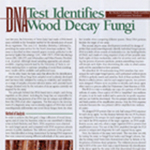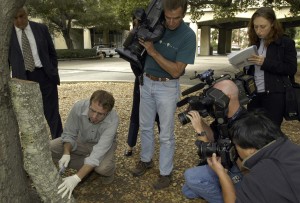If the stump of a felled tree is left in place, can the roots to continue to grow?
A lot depends on when the tree is felled. If a tree is cut in winter, it is possible that the root system will experience an additional year of growth. What happens to the root system depends on many variables, including soil type and presence of other trees of the same species adjacent to the one being felled. If the same species is present and the root systems of neighboring trees are grafted, the roots may be kept alive by trees still standing. Some species, like aspen, will actually sprout new shoots along the root system. Often a stump with roots that are alive will seal the cambium on the stump surface, resulting in a round bump along the entire circumference of the tree right over the cambial area (i.e. just inside the bark).












